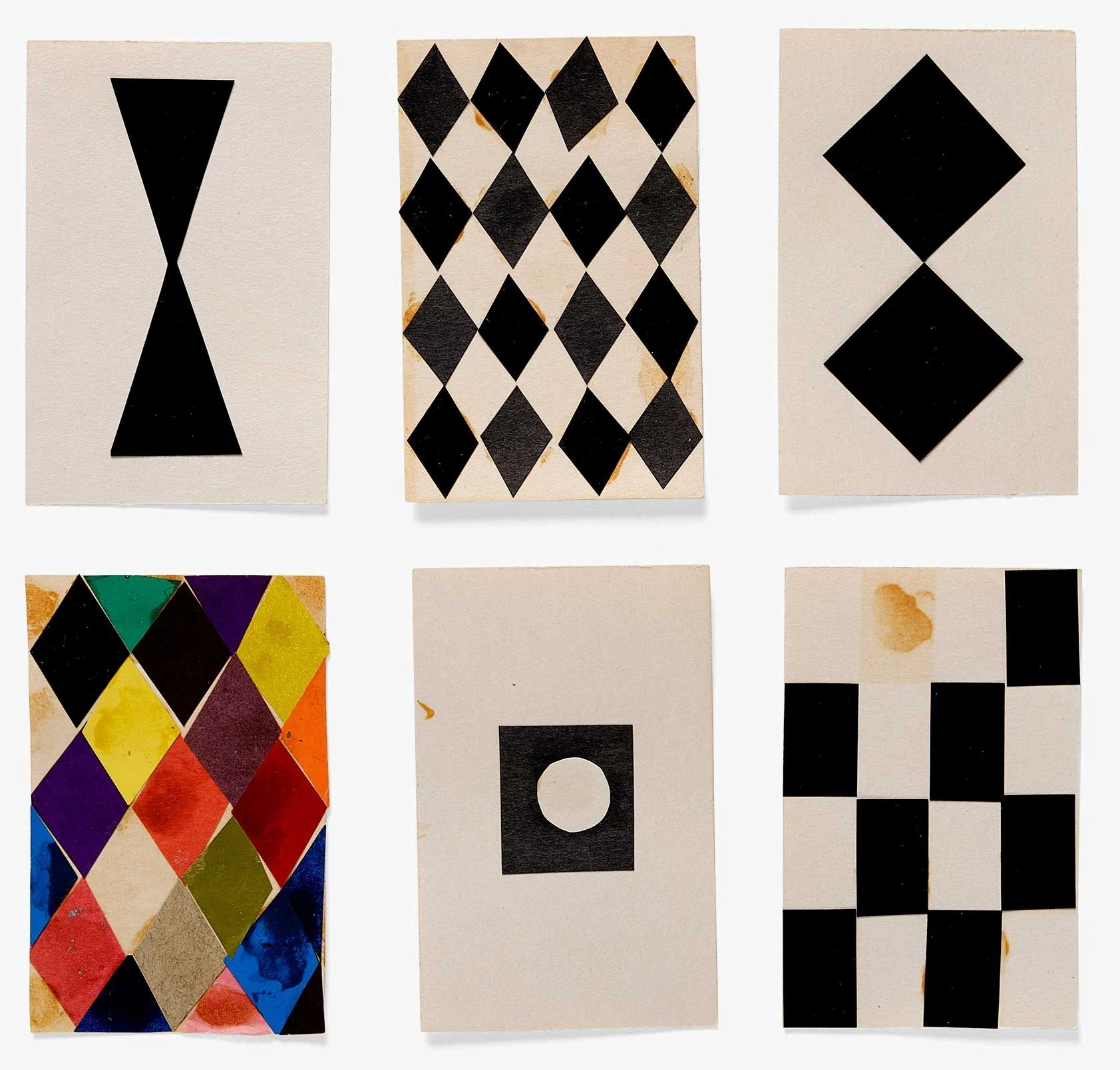
House of Cards Mock-up Process (Diamond Cards)
These mock-ups were made by Ray when designing the House of Cards pattern deck. Although most of the cards in this deck feature geometric patterns sourced from fine papers the Eameses collected, a few were based on paper collages that Ray made by hand. These early mock-ups, which don’t yet include the slots for building, are examples of these collages. Only the two featuring checkered diamond patterns made it into the finished deck. Each offers a study in color, which was one of Ray’s well-recognized strengths. The card that is covered in black and gray diamonds makes for a lesson in subtle tonal variation, while the one featuring multi-colored diamonds models a bolder contrast of hues. Comparing this colorful mock-up to its corresponding final design reveals just how carefully Ray thought out this arrangement. While many of the colors seen here appear unchanged, some have been swapped—for instance, the blue half-diamond on the cards’ left edge was later replaced with a pale pink one.
- Artifact
- T.2019.2.308
- Material
- Collage on card
- Artist / Designer
- Ray Eames
- Dimensions
- 3 ½ × 2 ¼ in
- 8.9 × 5.7 cm
- Date
- 1952





